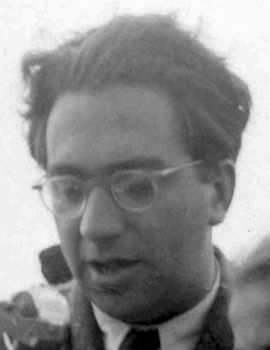
Home - Search - Browse - Alphabetic Index: 0- 1- 2- 3- 4- 5- 6- 7- 8- 9
A- B- C- D- E- F- G- H- I- J- K- L- M- N- O- P- Q- R- S- T- U- V- W- X- Y- Z
Bachem, Dipl-Ing Erich
 Bachem Bachem, Dipl-Ing Erich |
Born: 1906-12-12. Died: 1960-03-25. Birth Place: Wuerttemberg.
Bachem was a noted sailplane designer, who became the Technical Director at the Fieseler aircraft company, where in 1935 he was co-designer of the famous short-takeoff-and-landing Fi-156 Storch light aircraft. While at Fieseler he was asked to elaborate a von Braun design for a vertical-takeoff rocket interceptor. The resulting Fi-166, an enormous twin-turbojet aircraft launched vertically by a 10-metric ton rocket booster, was not considered realistic by the government.
Bachem founded Bachem Werke GmbH on 10 February 1942. The company initially constructed spare parts for piston engine aircraft. In response to the devastating Allied bombing campaign, in August 1944 Bachem submitted a totally revised concept for a simple, wooden, expendable, manned rocket interceptor to attack bomber formations. In September Bachem received a contract for fifteen experimental Natter BP 20 aircraft. Some flight tests were accomplished, including a fatal manned vertical launch, but the rocketplane did not see action before the end of the war.
After the war, Bachem settled in Bad Waldsee. His neighbor was Erwin Hymer, who was designing a new camping caravan for the post-war German vacationer. Bachem was an enthusiastic camper who had already built his own designs before the war. Bachem worked together with Erwin in shaping the Hymer, Europe's most successful camping caravan. When production began in 1958, Bachem was put in charge of the marketing network, dubbed Eriba (=ERIch BAchem). Bachem passed away in 1960, just as the Eriba Hymer was gaining the success it would carry into the next century.
Country: Germany.
1906 December 12 - .
- Birth of Dipl-Ing Erich Bachem. - . Related Persons: Bachem. German sailplane designer, co-designer of the Fieseler Fi-156 Storch, with von Braun of the Fi-166 rocket fighter. Founded own company in 1942 and developed Natter rocket interceptor. Post-war co-designer of the popular Hymer camper..
1939 July 6 - .
- Wernher von Braun proposed to the German Reich Air Ministry a "fighter with rocket drive". - .
Nation: Germany.
Related Persons: Bachem,
Fieseler.
Spacecraft Bus: German Rocketplanes.
Spacecraft: Von Braun Rocketplane.
The vertical take-off interceptor would reach 8 km altitude in 53 seconds and then manoeuvre toward the aircraft to be intercepted. The design was developed further by Fieseler as the Fi-166, which retained the rocket takeoff but used a turbojet for a longer cruising flight. The Ministry finally rejected the vertical-takeoff rocket interceptor concept at the end of 1941. The concept was revived at the end of the war as the Bachem Natter.
1960 March 25 - .
- Death of Dipl-Ing Erich Bachem. - . Related Persons: Bachem. German sailplane designer, co-designer of the Fieseler Fi-156 Storch, with von Braun of the Fi-166 rocket fighter. Founded own company in 1942 and developed Natter rocket interceptor. Post-war co-designer of the popular Hymer camper..
Back to top of page
Home - Search - Browse - Alphabetic Index: 0- 1- 2- 3- 4- 5- 6- 7- 8- 9
A- B- C- D- E- F- G- H- I- J- K- L- M- N- O- P- Q- R- S- T- U- V- W- X- Y- Z
© 1997-2019 Mark Wade - Contact
© / Conditions for Use